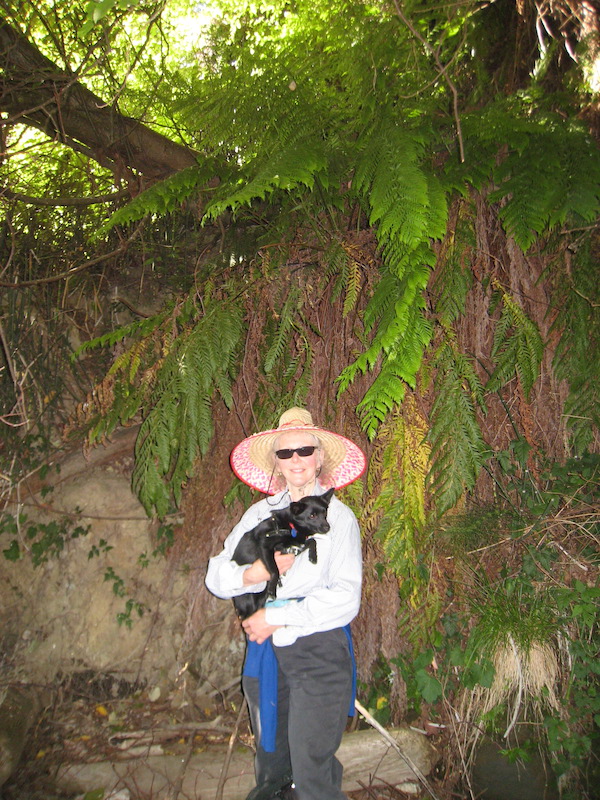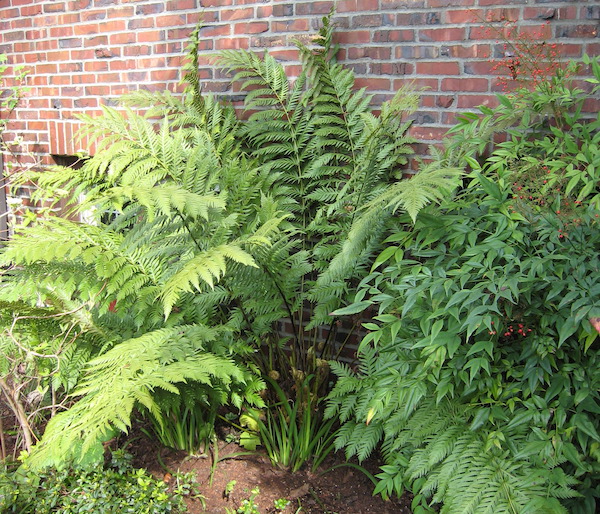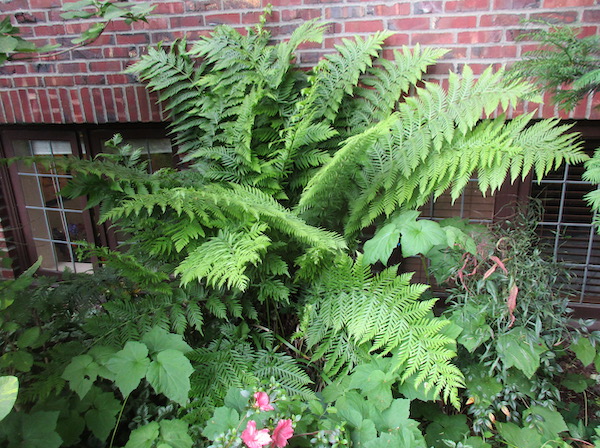| My book Wild Plants of Greater Seattle, 2nd. edition (2008), has room for little information about this Seattle native fern. Therefore, now I supply more detail. |
| This huge native ranges from southern B.C. to Mexico; it is rare in the Seattle area. Once less rare here, now it is more seen in gardens than wild. Blake Island's southwest side has many on steep wet banks right above high tide. Under redwood trees in California the fronds can tower 9 feet tall: you can stand in a patch and not see above them. In Seattle the fronds may be only 3 to 5 (6) feet long, and are more or less evergreen, but can look ratty by late winter. The arrangement of spore-bearing structures beneath the fronds accounts for the name Chain fern. The genus name commemorates English botanist Thomas J. Woodward (1745 - 1820). |
| I checked for Seattle area herbarium specimens but found none. But I was informed that years ago, some grew on Mercer Island and Vashon Island. Because it is so big and attractive, people dug up most wild specimens and planted them in gardens. |
| It is worth noting that the genus Blechnum (200+ species) is related closely to Woodwardia (14 species). And our native Deer Fern, Blechnum spicant, is often finicky in cultivation. But after it gets established it is often a tough survivor. |
| Woodwardia is cited in Jack Kramer's 1982 houseplant book 1,000 Beautiful House Plants and how to grow them. Kramer wrote: "Not usually thought of for indoor growing, these stiff and leathery, broad-fronded ferns make a pleasing contrast to more delicate and airy types." I think it is worth a try, but do not have room for it in my home. |
| Our native Woodwardia fimbriata is probably edible. Three of its east Asian species have been recorded as eaten by humans: Woodwardia japonica (L. fil.) Sm., Woodwardia orientalis Sw., and Woodwardia prolifera H. & A. One would consume the young tender uncoiled fiddleheads, or obtain starch from its rootstock. |
| I wonder if this fern grows in relatively alkaline soils, and fails in gardens with soil too acidic. Someone could experiment by applying lime to certain specimens, while witholding it from others. Adequate soil moisture is very important, also. |
It is often called the largest fern native in North America. But the largest Bracken fronds and Sword fern fronds can also reach 9 feet long.
Back |

Native Woodwardia above the beach on Blake Island ; July 1 2009 ; photo by ALJ
|

Woodwardia in Seattle garden April 9 2008 ; photo by ALJ
|

Woodwardia in Seattle garden June 14 2013 ; photo by ALJ
|

